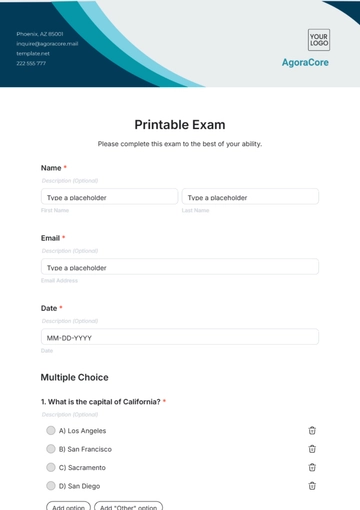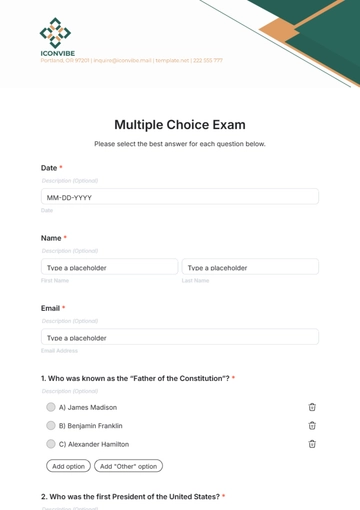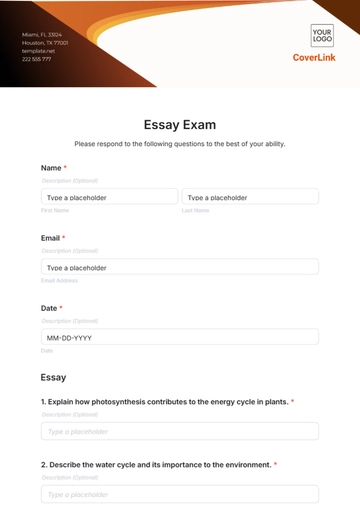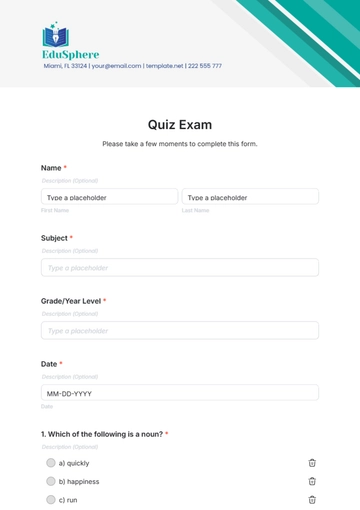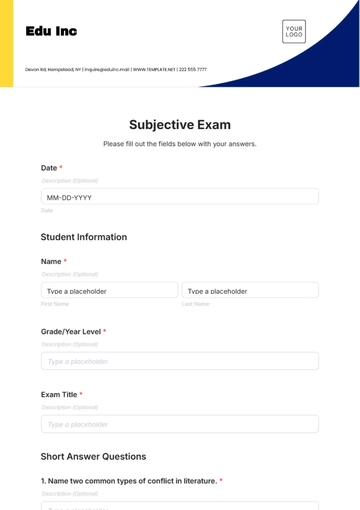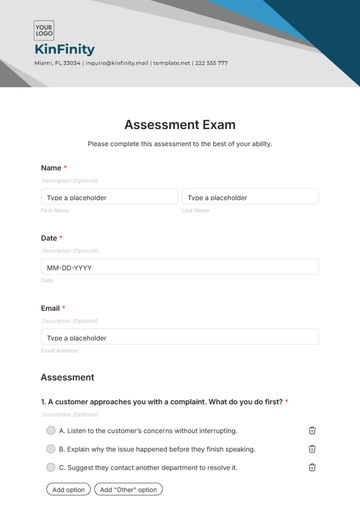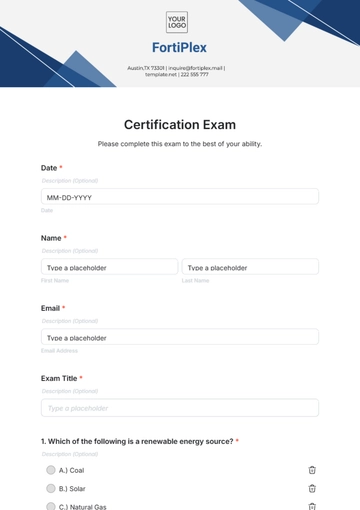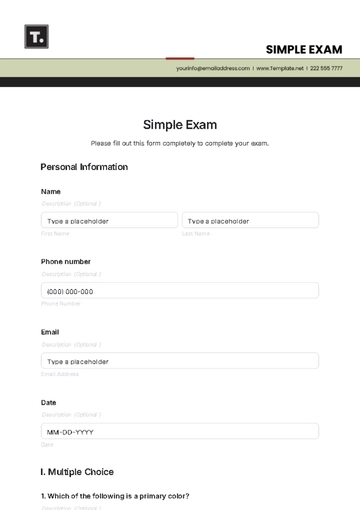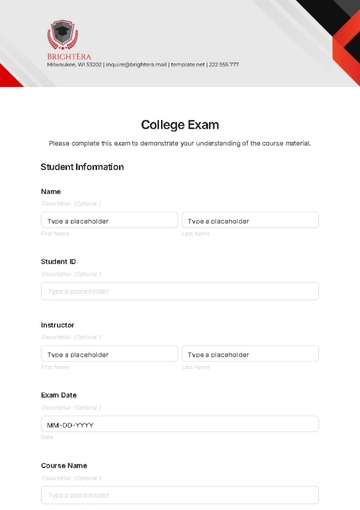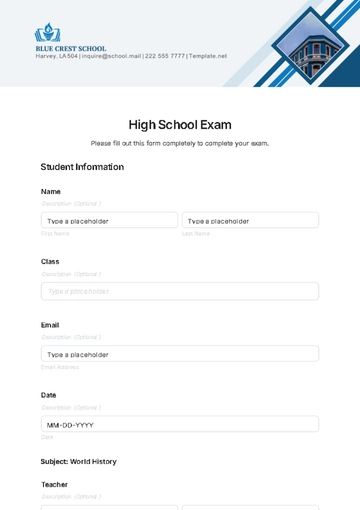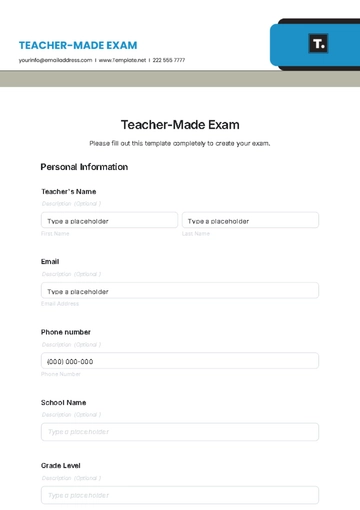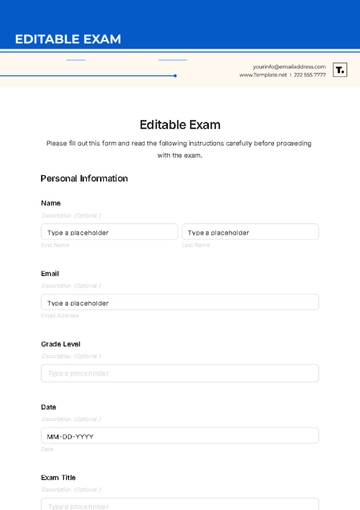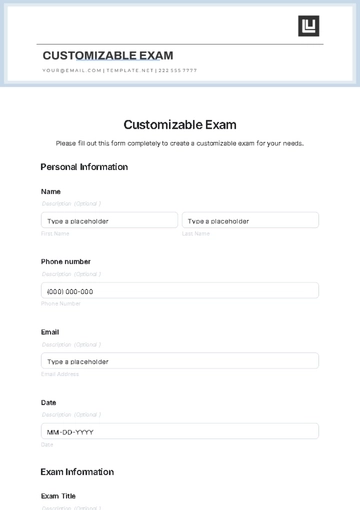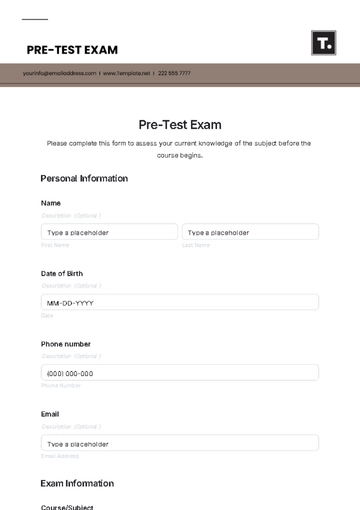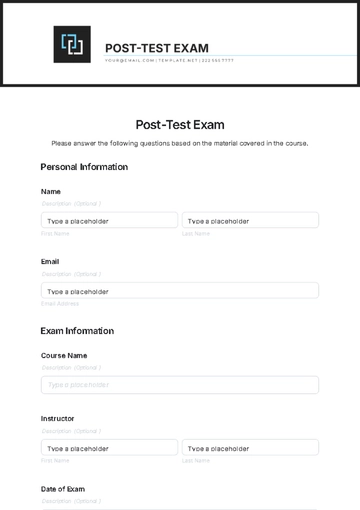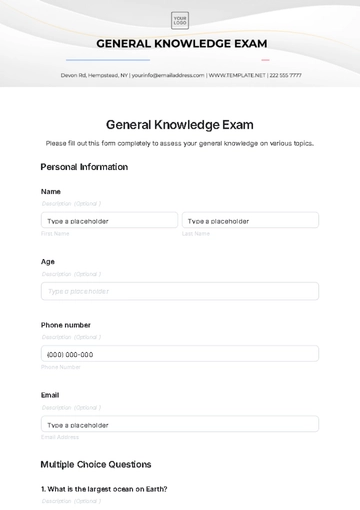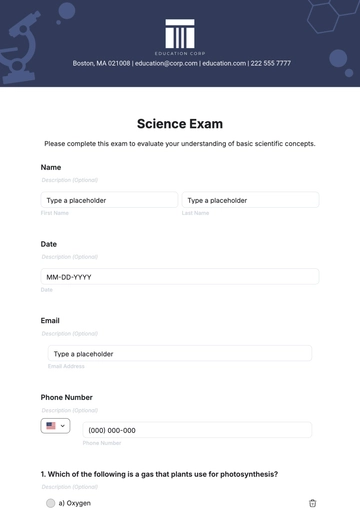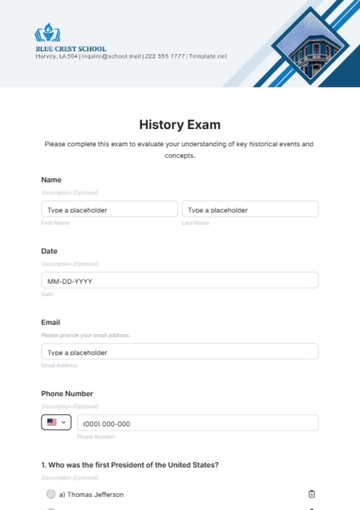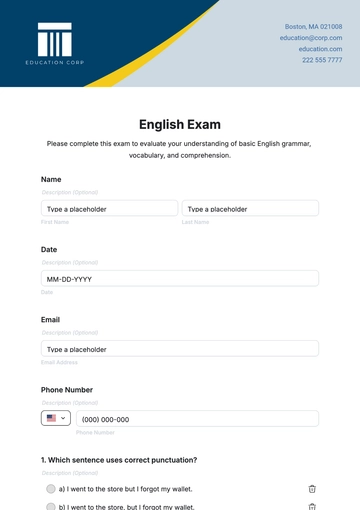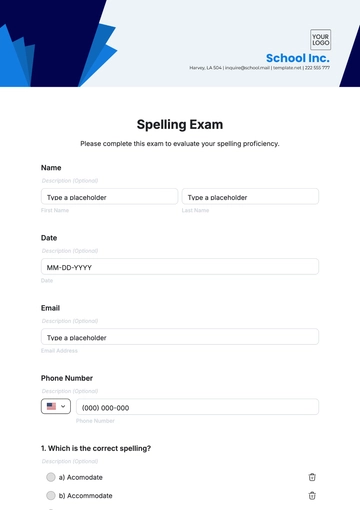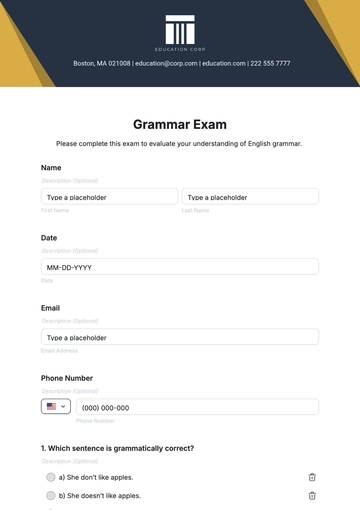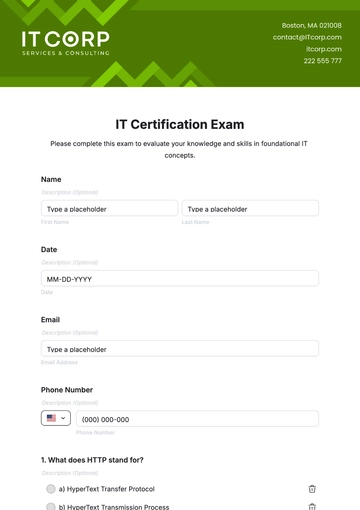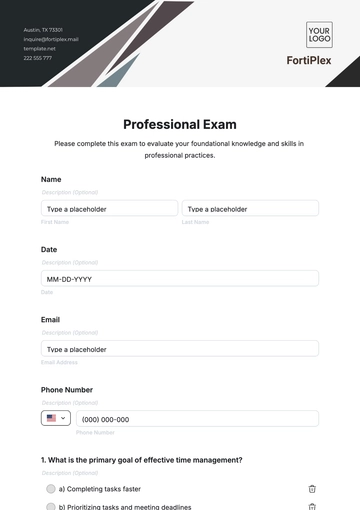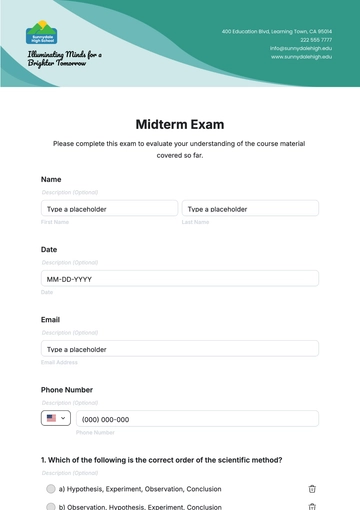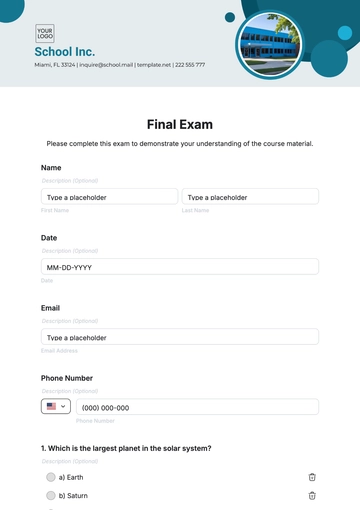Free Printable Student Exam Report
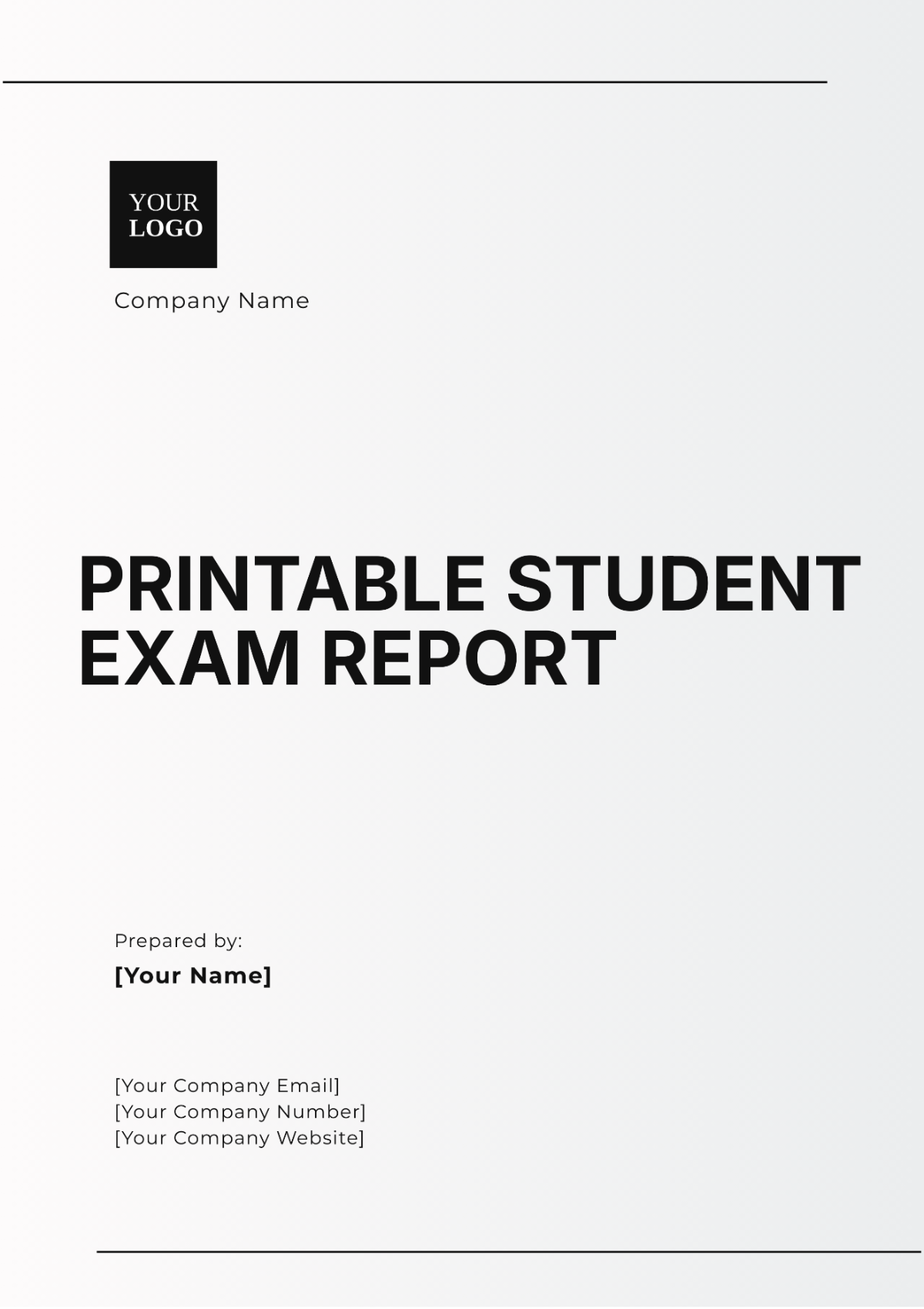
I. Overview
1. Introduction
This report presents a comprehensive analysis of the student examination results. The primary objective is to assess the performance across various subjects and to identify areas that require improvement. Through detailed statistics and observations, this report aims to provide actionable insights for both students and educators.
2. Methodology
The data analyzed in this report is collected from the recent semester examinations. The methodology involves descriptive statistics, comparative analysis, and graphical representations to provide a clear understanding of the performance trends. Additionally, qualitative feedback from students and teachers has been incorporated to enhance the contextual interpretation of the results.
3. Data Sources
The primary data source is the school's examination database, which includes individual scores, subject-specific averages, and overall class performance. Supplementary data from student feedback surveys and teacher evaluations is also utilized to cross-verify the quantitative findings and capture the qualitative aspects of the examination process.
II. Performance Analysis
1. Subject-Wise Performance
In this section, we provide a detailed analysis of the student performance across different subjects.
Subject | Average Score | Highest Score | Lowest Score | Pass Percentage |
|---|---|---|---|---|
Mathematics | 78 | 98 | 45 | 85% |
Science | 82 | 96 | 55 | 90% |
English | 75 | 92 | 50 | 80% |
History | 70 | 88 | 40 | 75% |
Geography | 77 | 89 | 53 | 83% |
2. Comparative Analysis
The comparative analysis focuses on the performance trajectory across subjects.
Mathematics: Improved by 5% compared to the previous semester.
Science: Consistent performance with a slight 2% increase.
: Declined by 3%, indicating a need for enhanced focus in this subject.
History: Displayed a notable improvement of 7%.
Geography: Improved by 4%, showcasing steady progress.
III. Areas of Improvement
1. Identified Weaknesses
The analysis has identified several areas that require attention:
: Grammar and comprehension need targeted interventions.
Mathematics: Advanced problem-solving skills need enhancement.
Science: Practical application and experiments require more focus.
2. Recommendations
Based on the identified weaknesses, the following recommendations are proposed:
Conduct additional grammar workshops and reading comprehension sessions.
Mathematics: Introduce advanced problem-solving classes and practice tests.
Science: Increase hands-on laboratory sessions and practical assignments.
IV. Conclusion
In conclusion, this report provides a holistic view of the student's examination performance. While there are areas of excellence, certain subjects require strategic improvements. Implementing the recommended actions can help enhance overall student performance in future examinations.
Moving forward, continuous monitoring and dedicated efforts from both students and educators will be pivotal in achieving academic excellence.
- 100% Customizable, free editor
- Access 1 Million+ Templates, photo’s & graphics
- Download or share as a template
- Click and replace photos, graphics, text, backgrounds
- Resize, crop, AI write & more
- Access advanced editor
The Printable Student Exam Report Template offered by Template.net is the perfect solution for tracking student performance. This customizable and downloadable template provides an easy way to organize exam results and is fully editable in our AI Editor Tool for quick personalization. Designed for convenience, it’s also printable, ensuring that you can generate physical copies whenever needed.
